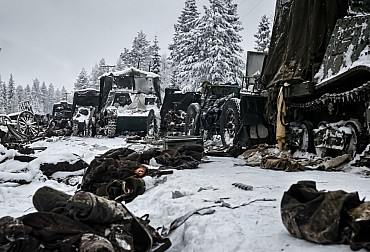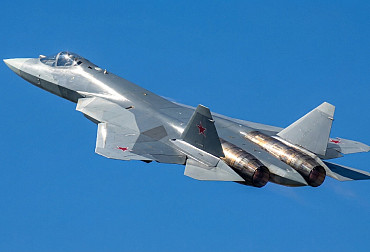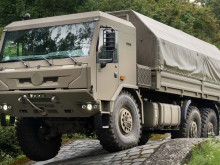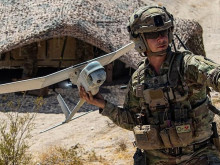Crew protection is the greatest advantage of the Leopard 2 tank
At the end of last year, the Czech Army acquired the first Leopard 2A4 tank, this year more examples of the same variant are being added and representatives of the Ministry of Defence are negotiating with Germany on the purchase of brand new Leopard 2A8 armoured vehicles. The Czech Republic has thus joined the list of operators of a quality and proven combat vehicle, which is almost a standard in NATO and the European Union, as it is used by a total of sixteen member countries of these two organisations, including all the neighbours of the Czech Republic. The Leopard 2 dates back to the Cold War era, as the first vehicles entered service in 1979, but it is still one of the most highly rated tank designs in the world and has great evolutionary potential. The arrival of the "leos", as these tanks were soon nicknamed, thus represents a dramatic qualitative shift for the Czech Army, as it paves the way for the definitive abandonment of Soviet-designed types. The war in Ukraine clearly proved that the Soviet "tanks" (regardless of type) are characterized by a fundamental weakness that makes them unable to protect their crews as well as Western tanks.
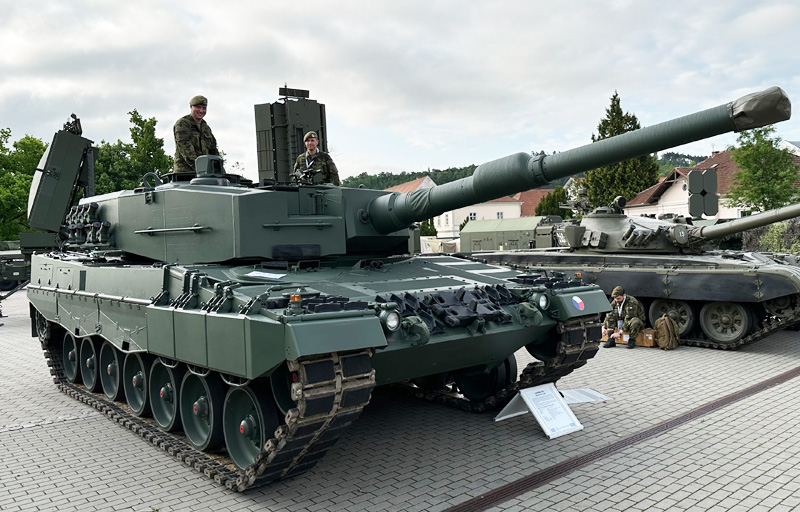
As is well known, Soviet and Russian-made tanks such as the T-64, T-72, T-80 or T-90 have only three-man crews, because the loading of the 125mm gun is handled by an automatic carousel-type device. This is located in the middle of the hull (or in the space under the turret) and its feeders move between the two crewmen in the turret, i.e. the commander and the gunner. The carousel system can hold (depending on the particular tank type) just over twenty rounds of ammunition, and another two dozen rounds are located scattered inside the vehicle, so to speak, wherever there is any available space. As a result, this inevitably means that the gunner and the commander are sitting above the ammunition loading machine while surrounded by other ammunition supplies. Thus, if the armour is penetrated and an explosion ensues, there is almost always a spectacular chain explosion of ammunition, which of course kills the crew and often completely rips the tank turret from the hull. In addition to the death of three crew members, this means catastrophic destruction of the entire vehicle beyond repair.
Surely, then, the question arises as to why the Soviet designers resorted to this solution when it must have been clear to them what a risk it posed. To find the answer, however, we must go back to the time between the world wars. Most tanks at that time had small and very cramped two-seater turrets, so that two men had to share the functions of commander, gunner and loader, while at the front of the hull sat the driver and another man who fired the front (so-called course) gun and later also served as a radio operator. This was also the design of the original version of the legendary Soviet T-34 tank. A change was brought by the new German medium tanks PzKpfw III and PzKpfw IV, which featured much larger turrets with space for three men, i.e. commander, gunner and loader. Each could therefore devote himself fully to his main task, which greatly increased the combat effectiveness of the vehicle. Consequently, this concept was subsequently adopted by tanks of other countries (including later variants of the T-34) and the five-man crew became more or less standard.
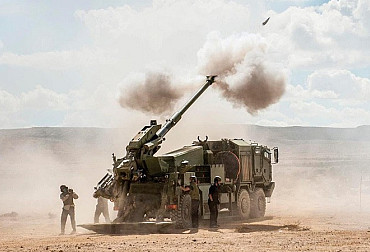
Essentially the same arrangement also worked for the vast majority of tanks at the beginning of the Cold War, although the second man seated at the front of the hull, the gunner-radar operator, disappeared. Course machine guns proved of little use, and advances in radio technology made it possible to move this element into the turret, where it was manned by the commander. The crew therefore settled on four men, three in the turret and one in the nose. This was also the design of the Soviet T-54/55 and T-62 tanks, which basically continued the evolutionary line of the T-34, but in the late 1950s a completely new tank design was born in the USSR, which then entered service under the name T-64. The biggest change was the automatic charger described above, which allowed the charger to be removed from the crew. At this point, however, one extremely important fact must be mentioned, namely the reason for this decision. It was not an attempt to increase the rate of fire (in fact, the practical cadence is the same, often rather lower than that of vehicles with human loaders), but literally to remove the loader from the crew, as this allowed the Soviet Union to create a smaller and lighter armoured vehicle.
Two crew members in the turret logically meant a smaller turret size, so less armour was sufficient to protect it, which had a positive effect on the weight of the tank. The same concept is followed by later types of Soviet and Russian tanks, which can therefore generally boast less weight than Western vehicles. To give an idea, the original T-64 variant weighed 38 tons, after which the T-72 tank appeared, which was developed essentially as a simplified "mobilization" derivative of the T-64 and weighed just over 40 tons. A further evolution of the "sixty-four" design resulted in the gas turbine-powered T-80 type, and from a combination of the basic T-72 design and some advanced features of the T-80, the T-90 tank was born. Improvements to Soviet and Russian tanks, which included armour protection, of course meant increasing weight, but even so, the current T-90M (which is the most advanced Russian tank deployed in combat) weighs only 48 tonnes. This represents a significant difference from Western tanks, which are much heavier.
The current Western tanks are mostly modernised versions of designs that were developed in the late 1970s or early 1980s, as illustrated by the German Leopard 2. The American M1 Abrams and British Challenger 2 also belong in the same category. Western designers have left the chargers in the crew, which has the advantage, by the way, that in the event of a field jam, malfunction or other problem, another pair of hands is available. The aforementioned types of tanks were created essentially as a reaction to the birth of the T-64 and its successors, since the existing Western tanks obviously could not withstand the penetrating effect of the new 125 mm calibre guns that the Soviet tanks carried. Durability therefore came first in the design philosophy of Western armoured vehicles, even at the cost of high weight. Thus, the Leopard 2A4 weighs around 55 tons, and the upgraded variants of the German armour weigh around 64 tons. And even heavier is the American Abrams, as its latest variants are already approaching the 70 tonne mark.
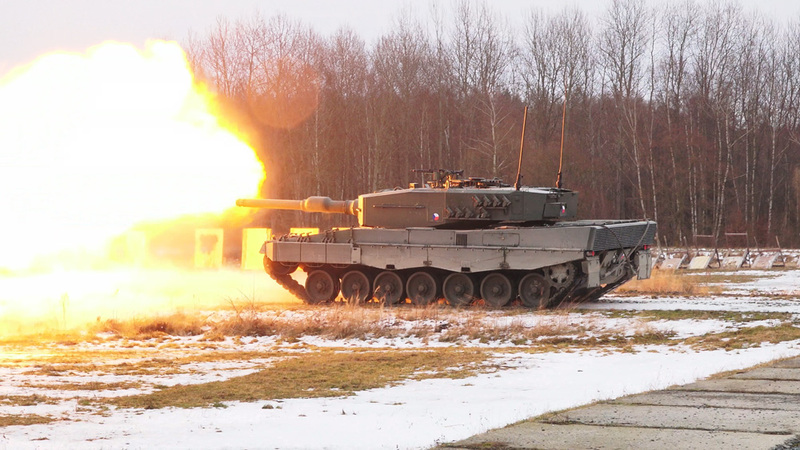
However, Western tanks like the Leopard 2 use a completely different design philosophy, as their ammunition supply is stored in the rear of the large turret and separated from the crew compartment by an armoured bulkhead. There is a hole in the bulkhead through which the loader pulls the rounds out and inserts them into the weapon, but the design of this storage compartment is such that if a hit occurs, the energy of the explosion is directed outwards or sideways and upwards. The crew therefore has a very decent chance of surviving even the explosion of the ammunition carried, and it may even be possible to repair a vehicle so hit. In Soviet types, of course, such a thing is completely out of the question. Later on, Western tanks with three-man crews and charging machines also appeared, in particular the French Leclerc and the South Korean K2 Black Panther, and also for the Leopard 2 and Abrams types automatic machines are foreseen. However, these devices use a completely different design to the Soviet ones, as they are tracked mechanisms operating in the rear of the turret, so these armoured vehicles also consistently maintain a separation of ammunition from the crew compartment.
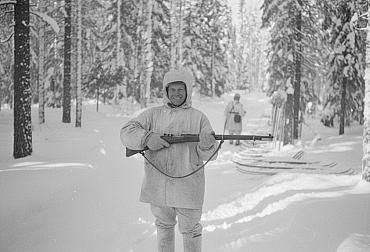
The Soviet designers sought smaller and lighter armor mainly because they preferred speed and wanted to reduce the chances of detecting the tank on the battlefield due to its small silhouette. Experience from World War II probably played a role in this, as German tanks were able to fire effectively at much greater ranges than Soviet ones because they could detect and target them in time and had guns with adequate range and accuracy. Although the effort to reduce the silhouette (and thus reduce the chance of spotting the tank) has its logic, it plays only a minimal role on today's battlefield, because the battlefield is so saturated with all sorts of sensors (including drones) that trying to "hide" the tank thanks to a small silhouette brings only very limited results. Of much greater benefit may be the various camouflage kits that reduce the optical, infrared and radar signatures of the vehicle, such as the Swedish Barracuda system or the Russian Nakidka kit, but of course these can be installed on any type of armoured vehicle regardless of its size.
Of course, the larger size and weight of Western tanks can sometimes bring complications, e.g. in terms of the load capacity of bogies and bridges, a topic that the Czech Army will certainly have to address as well, as the Leopard 2 is significantly heavier than the T-72M4 CZ. Despite this, however, the Western design philosophy is proving to be much more effective in the long run, as the war in Ukraine also proved very convincingly. The public could see dozens of images of Soviet and Russian-made armoured vehicles suffering that catastrophic destruction, including the death of the entire crew. The Ukrainian army also lost Leopard 2 tanks during the counter-offensive, but detailed analyses of their footage and available testimonies demonstrate the dramatically superior durability of these vehicles. By the end of August 2023, not a single case of catastrophic destruction of a Leopard 2 armoured vehicle had been documented, and it appears that the vast majority of damaged vehicles can be repaired, which is also confirmed by reports of their transfer to workshops in Poland and Lithuania.
Of greatest significance, however, is the finding that the vast majority of Ukrainian soldiers in destroyed or damaged Western-made vehicles survive. A prime example is the failed attempted attack near the village of Mala Tokmacka in early June, which received a great deal of media attention and in which the Ukrainian army lost double-digit numbers of armoured vehicles, including Leopard 2 tanks and M2 Bradley infantry fighting vehicles. However, despite the horrific-looking loss of equipment, this failure resulted in only a few dead and wounded Ukrainian soldiers, and when another attempt to advance subsequently succeeded, a large number of the 'lost' vehicles were towed away for repair. In total, there were around 120 soldiers in these vehicles, and if these were, for example, T-72 tanks and BMP-2 infantry fighting vehicles, it can be assumed that the vast majority of the men would have been dead or seriously wounded. It is therefore the well thought out and effective armour protection, which dramatically increases the crew's chances of survival, that must be considered the main advantage of current Western armoured fighting vehicles, including of course the Leopard 2 tanks.
At this point it is worth recalling the somewhat scary fact that, according to Soviet calculations, the T-72 tank's lifetime on the battlefield was supposed to be only about 15 minutes. It is obvious that the destruction of the vehicle would almost certainly mean the death of three crew members, which practically means that the Soviet calculations gave the tankers only 15 minutes of life. In the case of the more powerful T-64 and T-80 tanks, the odds were only slightly more favorable. Of course, Western planners were also aware that a tank could be hit and destroyed, but that is precisely why maximum effort was concentrated on protecting the crew or increasing their chances of survival. The Soviet army considered (and the Russian army apparently still considers) tanks and their crews as mere "consumables", whereas the NATO countries consider their soldiers as the most valuable thing they have and therefore want to protect their lives and health (and of course also the combat experience they have gained) as much as possible. This philosophy is also matched by the excellent armour resistance of the Leopard 2 tank, which is undeniably good news for Czech tankers, who can be sure that protecting their lives comes first.
















